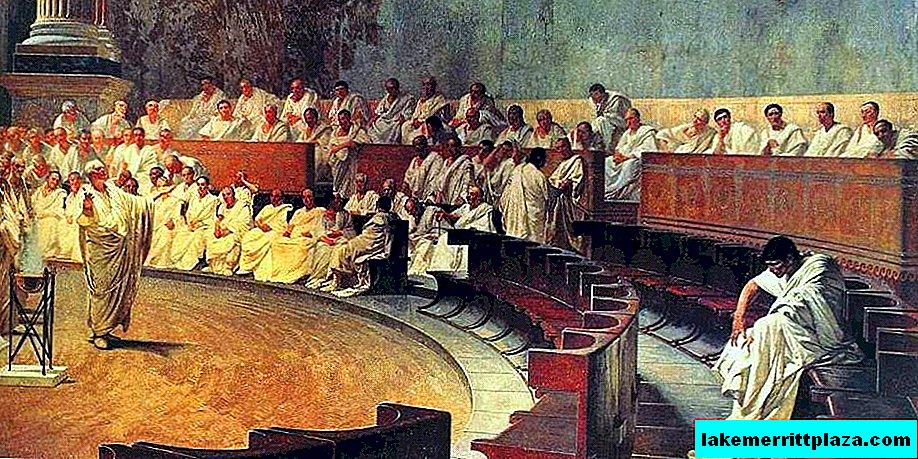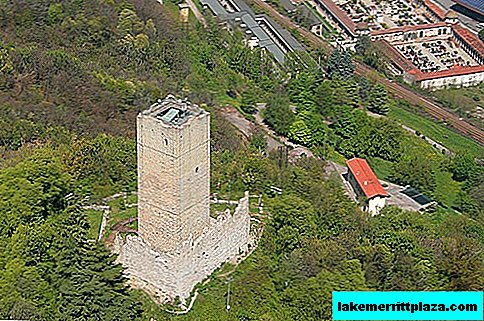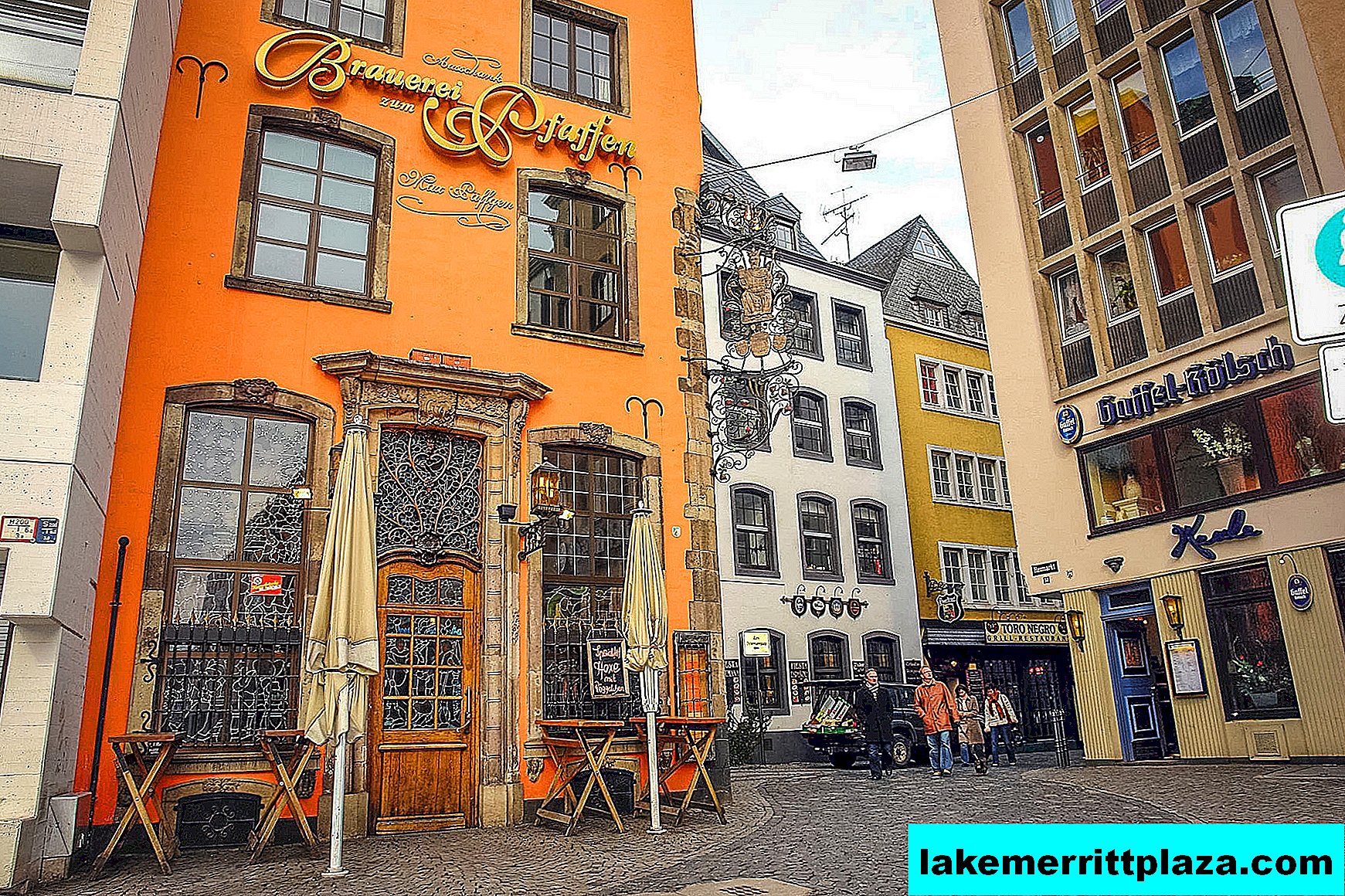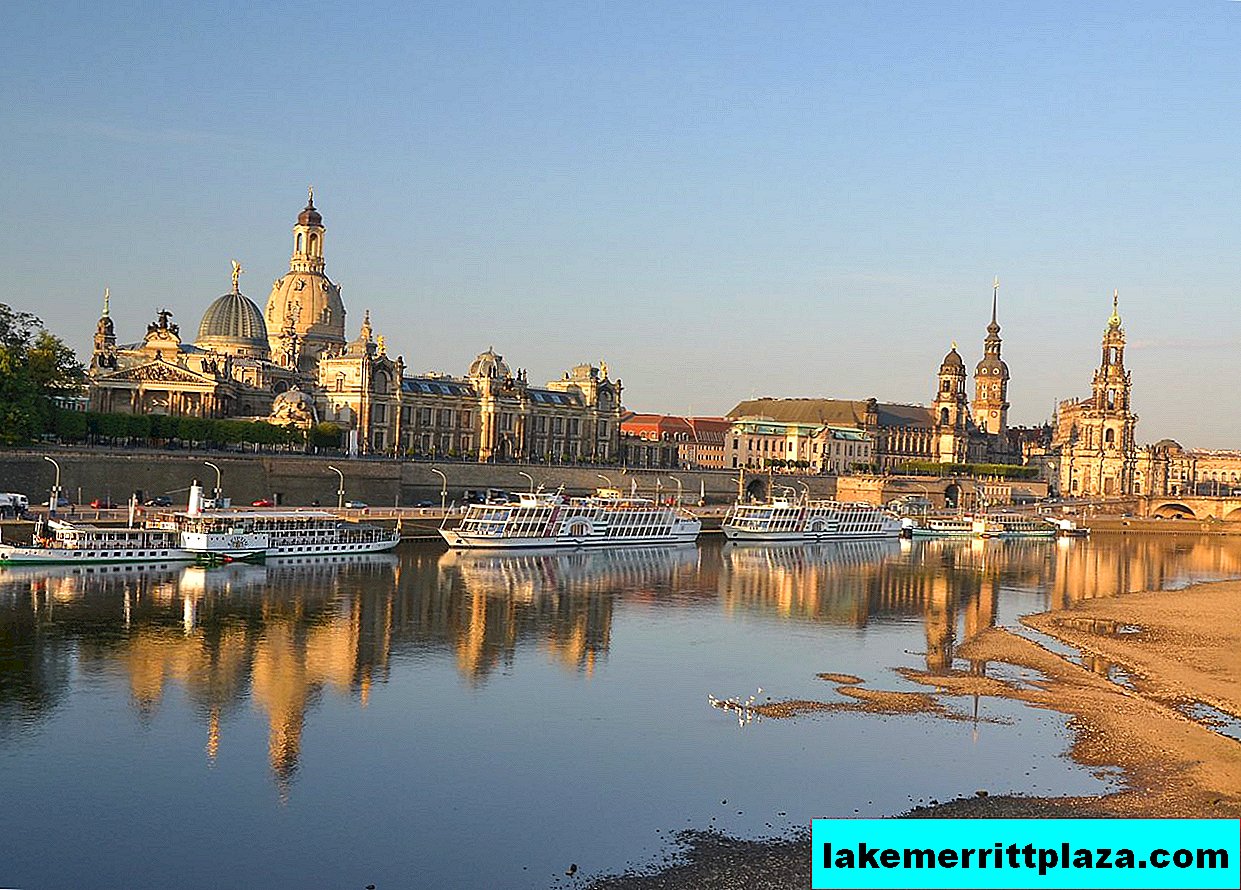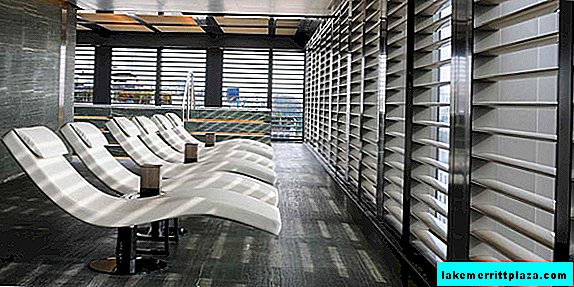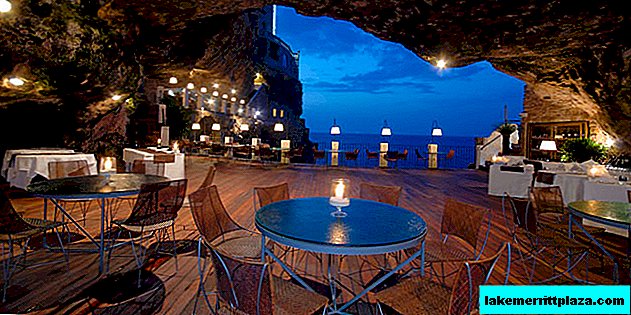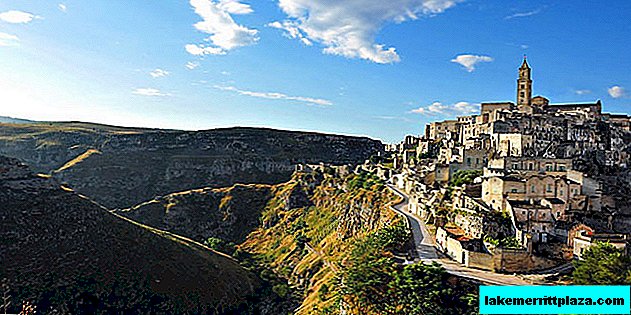The most beautiful and popular attraction of Florence is the Cathedral of Santa Maria del Fiore (Duomo di Firenze) - a symbol of the capital of Tuscany.

A modern traveler, strolling through the streets nearby Cathedral Square, will locate Santa Maria del Fiore from afar. The tower of the cathedral, which rises upward, rises 90 meters above the ground. The huge building, expertly decorated with stucco, is crowned with a bright red dome. This dome, similar to a guiding light house, it attracts a look, calls travelers to itself. By the way, not one, even the most wide-angle camera, can completely capture the cathedral building into the lens!
Cathedral style and history
Cathedral of Santa Maria del Fiore (Italian - La Cattedrale di Santa Maria del Fiore) makes a lasting impression. The extensive building does not put pressure on visitors with its monumentality. The interweaving of the early Renaissance and Gothic, as a result, gave an indescribable beauty quattrocento architectural style. It fills the marble walls of the cathedral with blessed lightness and makes you think about the most secret. Let us turn to the history of what was the life path of this building.

The Catholic Church was worried about the construction of a new cathedral at sunset of the 13th century. In those days, Florence developed rapidly, turning into a large city. The number of parishioners at the local Santa Reparata temple exceeded its maximum capacity. The city authorities were also interested in the fact that Florence was able to compete with other major cities of Tuscany - Pisa and Siena. Thus, the obsolete Santa Reparata Cathedral has sunk into oblivion to make way for its successor.
The construction of the Duomo (cathedral) began in the 13th century, and the last works on the facade decoration were completed by the end of the 19th century.
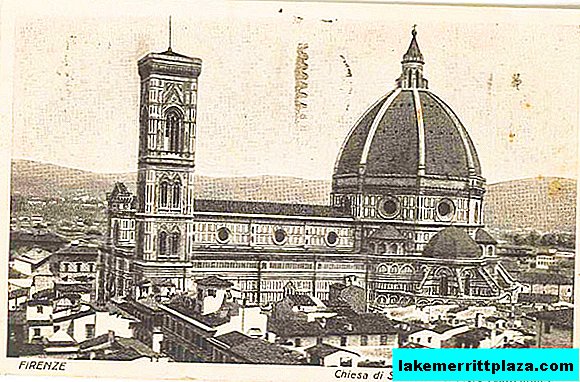
It took the whole 6 centuries to build the Cathedral of Santa Maria del Fiore, famous for its unsurpassed dome and a mesmerizing game of outdoor decoration colors. As a result, residents received a temple unique in size, its capacity is 30 thousand parishioners. In fact, it represents a whole area covered by the dome of the cathedral.
Construction works
The designer of the cathedral was elected Arnolfo di Cambio. Based on the ideas of the early Italian Renaissance and the classic elements of Gothic architecture, the architect conceived a grandiose structure in scale. The Duomo Santa Maria del Fiore was seen by the developer as a three-nave temple in the form of a cross. Moreover, the dimensions of the new cathedral exceeded the parameters of its predecessor to a large extent. The entire area previously occupied by Santa Reparata fit in the average nave of Santa Maria del Fiore.

The symbolic first stone, the foundation of the cathedral was laid in September 1296 by the envoy of Pope Boniface VIII. Through the efforts of Arnolfo di Cambio, most of the construction of the walls of the Duomo was completed. However, after the death of the architect, construction was suspended for 30 years. The next curator of the erection of the temple was the famous Italian painter and architect Giotto di Bondone (Italian: Giotto di Bondone).  The work of this artist was subsequently inspired by such art geniuses as Rafael, Michelangelo and Leonardo da Vinci. Giotto at that time worked as the chief architect of Florence. As part of his official duties, he came to grips with the work on the bell tower of the Duomo, called Campanile (Italian Campanile). Giotto developed a construction plan for the bell tower, and also created detailed sketches for the exterior decoration of the first tier of the building.
The work of this artist was subsequently inspired by such art geniuses as Rafael, Michelangelo and Leonardo da Vinci. Giotto at that time worked as the chief architect of Florence. As part of his official duties, he came to grips with the work on the bell tower of the Duomo, called Campanile (Italian Campanile). Giotto developed a construction plan for the bell tower, and also created detailed sketches for the exterior decoration of the first tier of the building.
The death of the architect in 1337 temporarily deprived the construction of the main creative force. And the plague epidemic that came after 11 years completely cut off work.
Workers again violated their duties only in 1349 under the guidance of an architect Francesco Talenti. 10 years later, it will replace Giovanni di Lappo Gini. On the account of these curators, the completion of the construction of the bell tower and the final formation of the architectural image of the walls of the cathedral are listed. At the beginning of the 15th century, Santa Maria del Fiore was prepared to create a dome. The biggest snag arose in this matter. The vast area of the dome required from the builders at that time the impossible. Therefore, the problem of structural stability had to be solved by engineering.
It is believed that the Florentine authorities announced a competition to find a solution to the problem. On the one hand, it was necessary to come up with the ideal design for the dome, and on the other, to solve the problem of its construction at a height of several tens of meters. Be that as it may, the answers to questions of interest to builders were born in the head of architect Filippo Brunelleschi
The smartest Italian husband accurately calculated the parameters of an octagonal tower and an elongated spire. He also invented and translated into reality a number of mechanisms to raise entire sections of the dome to great heights. In order to stabilize the structure, Brunelleschi ordered to install 24 vertical stiffeners and 6 horizontal rings. This frame still holds the Duomo dome, whose total weight is about 37 thousand tons.
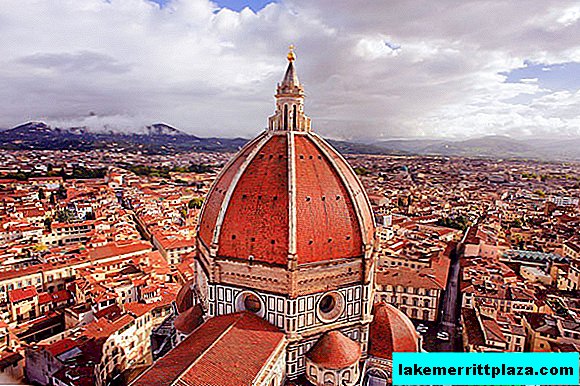
Work on the dome was carried out from 1410 to 1461. As the last architectural touch, Filippo Brunelleschi provided a lantern tower (lantern), crowning the dome of the Cathedral of Santa Maria del Fiore. It helps to evenly distribute the weight of the dome on the "drum" of the building, and at the same time has an aesthetic and functional load. The completed construction was consecrated by Pope Eugene IV himself, which gave it extra weight in the circles of the Catholic Church.
In the 16th century, a real scandal arose around the cathedral. A substantial part of the work related to the external decoration of the Duomo was put up for competition. However, various nobles and officials tried to warm their hands on the contest participants. As a result, construction activities were delayed until the mid-19th century.
Ultimately, the design of the cathedral from 1876 to 1887 was the responsibility of the Italian architect Emilio de Fabris. The designs he invented still adorn the facades of Santa Maria del Fiore. A special find of de Fabrice is polychrome facing marble. This material makes the cathedral “play” with colors: white, flowing seamlessly into gray, green and pink tones. This palette is designed to imitate the three-color Italian flag.
The lancet arches of the facade are decorated with frescoes dedicated to the life of the Virgin. Above the central entrance to the cathedral, the infant Christ is seated on the throne with the Mother of God. This bas-relief is surrounded by statues of twelve preachers. Just above the portal with statues, the facade is decorated with a huge openwork window. The space around the window contains molded medallions depicting the famous inhabitants of Florence. Of great interest are the three bronze doors that protect the entrance to the cathedral.
The interior of the cathedral
The wealth of exterior decoration of the Cathedral of Santa Maria del Fiore, as well as its size, makes an incredible impression on travelers. Once inside, the visitor will be confused. Lacy lining of the external decor gives way to the laconic interior of the Catholic church. During the reign of Lorenzo Medici the Magnificent, a Dominican priest preached in the Duomo Girolamo Savonarola. He was famous for the rigor of his views, and did not fail to make sure that the Duomo turned into a model of morality and virtue.
The vaults of the cathedral are decorated with frescoes of the 15th century, depicting Florentines who have made a great contribution to the life of the city, country and church. These include compositions dedicated to Dante Alighieri, Giovanni Akuto, Nicolo da Tollentino. In addition, work busts are saved Arnolfo di Cambio, Giotto di Bondone, Brunelleschi, Emilio de Fabrice.
The most important relic of Santa Maria del Fiore is urn with the relics of St. Zinovius of Florencediscovered in the ruins of the Santa Reparata temple in the 14th century. An unusual decoration of the cathedral is the watch created by Paolo Uccelo in 1443. The highlight of the chronometer is that its hands rotate in the opposite direction.
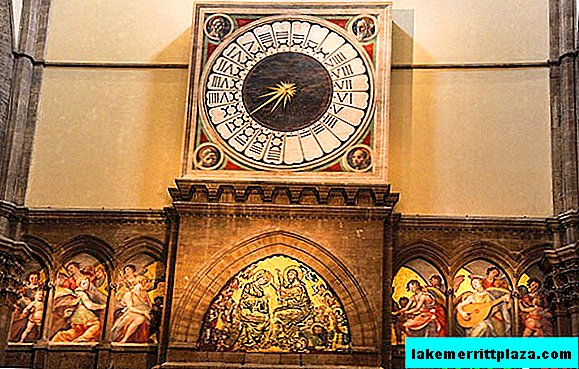
It is simply impossible to ignore the amazing stained glass windows of the Duomo. 44 glass paintings adorn the arches of naves and transepts. Each of them is dedicated to the acts of saints and martyrs of the Old and New Testaments. Rounded stained-glass windows placed in the drum of the dome illustrate scenes from the life of Christ and Our Lady.
Having enjoyed the energy emanating from frescoes, stained glass windows and sculptures located within the walls of the cathedral, it is enough to look up to experience a new surge of admiration. The vast dome of the Duomo was masterfully painted in the second half of the 16th century by the artists Giorgio Vasari and Federico Zucchari.

The picture has a multi-tiered structure and is dedicated to the Last Judgment. The lowest ring is reserved for deadly sins and the inhabitants of Hell, led by the Antichrist. The following rings, rising up to the lantern, depict saints, elders of the apocalypse, heavenly angels, the Mother of God and good deeds. The image of Satan is the antagonist of the bright figure of Christ.
Museum Opera di Santa Maria del Fiore

Most of the objects that adorned the interior of the cathedral were gradually moved to the Duomo Museum (Museo dell'Opera di Santa Maria del Fiore), located on Cathedral Square. The room, which served as the architect of the workshop Brunelleschi, opened in 1891 as a museum at the cathedral. Visitors to the museum will be able to admire the design drawings of the dome, as well as models created by Brunelleschi himself. The magnificent choirs that served as the singers of the cathedral in the 15th century also found their refuge in the museum.
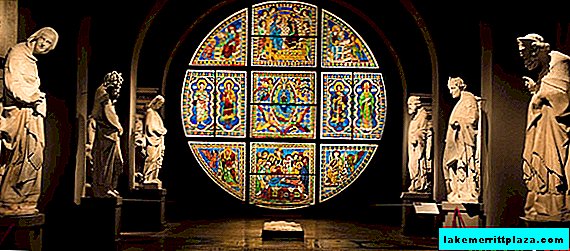
The extensive collection of sculptures exhibited at the Duomo Museum deserves special mention. It includes:
- An excellent selection of Florentine sculptures dating back to the 16th century.
- The statue "Penitent Mary Magdalena" (15th century) earlier, adorning the Baptistery of the cathedral.
- The Prophet Habakkuk (15th century) by Donatello was moved to the museum from the bell tower;
- The statue dedicated to Pope Boniface VIII by Arnolfo di Cambio - removed from the facade of the cathedral.
- as well as the unfinished work of the great Michelangelo Buonarroti, “Pieta”.
Baptistery of San Giovanni
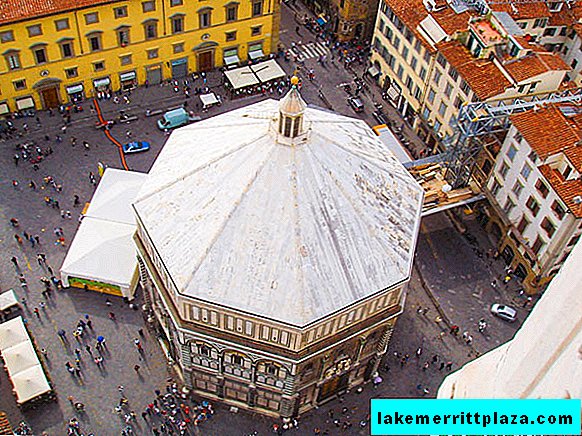
The complex of the Cathedral of Santa Maria del Fiore also includes a baptistery (Battistero di San Giovanni), in other words a place for baptism. It is designed as a separate building, standing nearby the Duomo in Cathedral Square. The baptistery bears the name John the Baptist (Italian: San Giovanni Battista), and is the most ancient building on the square. The date of its construction is lost in the 5th century AD. The squat hexagonal building is made in the Romanesque style, and it got its modern look in the 12th century. Inside the baptistery you can admire the golden dome painted with the faces of Christ, saints, and scenes from the bible.
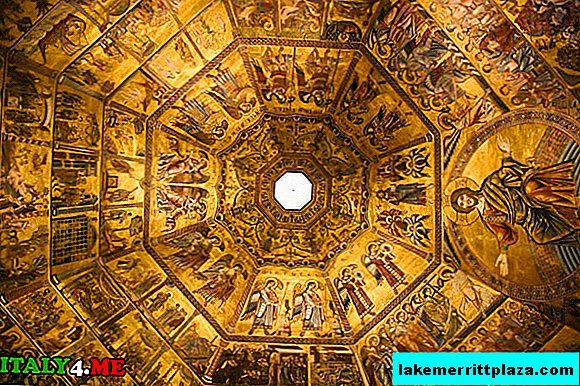
Of particular interest are the bas-reliefs that adorned the gates of the baptistery in the 13-15 centuries. They depict John the Baptist and the Basic Virtues. The newest gate, east, they were decorated by Lorenzo Ghiberti in the middle of the 15th century in a special way. The gilded door leaf was divided into 10 equal plates. In each of them, the sculptor carefully reproduced biblical stories. The second name of this masterpiece is the Gates of Paradise.
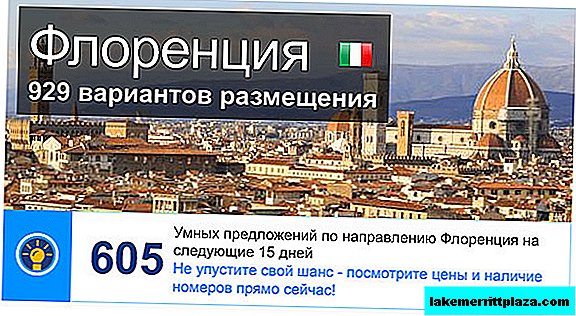
Cathedral of Santa Maria del Fiore in numbers
If you look at the Duomo from a bird's eye view, then it will be clear that its shape is a Latin cross with a vertical of 153 meters and a transept (width of the cross) - 90 meters. The height of the internal arches reaches 23 meters. And the highest point of the cathedral is a bronze ball, at the tip of the dome - 90 meters. Capacity - 30 thousand people. Over a dozen architects worked on the construction of the building, and the duration of the work reached 6 centuries.
We should also read out the parameters of the amazing Duomo dome:
- its diameter is 42 (!) meters;
- weight - 37 thousand tons;
- the number of bricks is about 4 million pieces.
Given all these data, we can safely say that the Duomo Santa Maria del Fiore is one of the most spacious and impressive temples in Europe!
Practical information
How to get there
The Cathedral of Santa Maria del Fiore is located in the Italian city of Florence at the Cathedral Square (Piazza del Duomo), building number 17.
Find a hotel near the Duomo CathedralGetting to the cathedral is not difficult, because it is located in the city center and is the most famous landmark of Florence. Any bus coming to Cathedral Square will do.
Cathedral Hours
- Monday, Tuesday, Wednesday, Friday - open from 10:00 to 17:00;
- Saturday - from 10:00 to 16:45;
- Sunday - from 13:30 to 16:45.
You can admire the dome of the cathedral:
- all days except Saturday - from 8:30 to 19:00;
- Saturday - from 8:30 a.m. to 4:30 p.m.
Museum Hours
- all days except Sunday - from 9:00 to 19:00;
- Sunday - from 9:00 to 13:45.
Ticket price
Since 2018, you can enjoy the beauty of the interior of Santa Maria del Fiore by purchasing a single ticket in advance for 18 euros, which is also valid for climbing the dome (you need advance reservation of time), visiting the Duomo Museum and the Baptistery.
The current ticket price and work schedule can always be checked on the official website www.museumflorence.com, which is available in Italian and English.
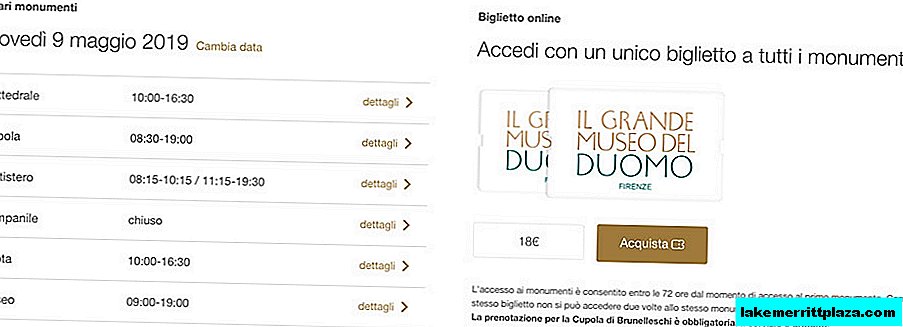
For children aged 3 to 11 years, the ticket price is 3 euros. Tickets are valid for 72 hours, each attraction can be visited once.
The cathedral can also be accessed free of charge after approximately 2 hours.
Alternative options:
You can get to the dome without a queue as part of a group tour in English, the duration is 1 hour, the cost is 40 euros per person, the start time is 10:00 or 14:00. Also, this option is suitable for those who did not have time to reserve a visit to the dome in advance.

Take your time and set aside an entire day for a walk around Cathedral Square and an excursion to the Cathedral of Santa Maria del Fiore. The external beauty and the colossal historical value of the Duomo create an indescribable atmosphere of involvement in something eternal.
Those wishing to fall in love with the beauties of Florence with the Italy team for me are welcome to our copyright tours.

